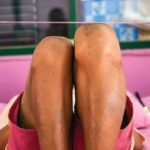Humans are not perfectly symmetrical. Almost everyone has one ear that’s higher or one foot that’s larger than the other. Similarly, leg lengths are often not quite the same. There is disagreement as to what constitutes a clinically significant difference, but some studies suggest that leg length discrepancy (LLD) can lead to osteoarthritis (OA) of…








